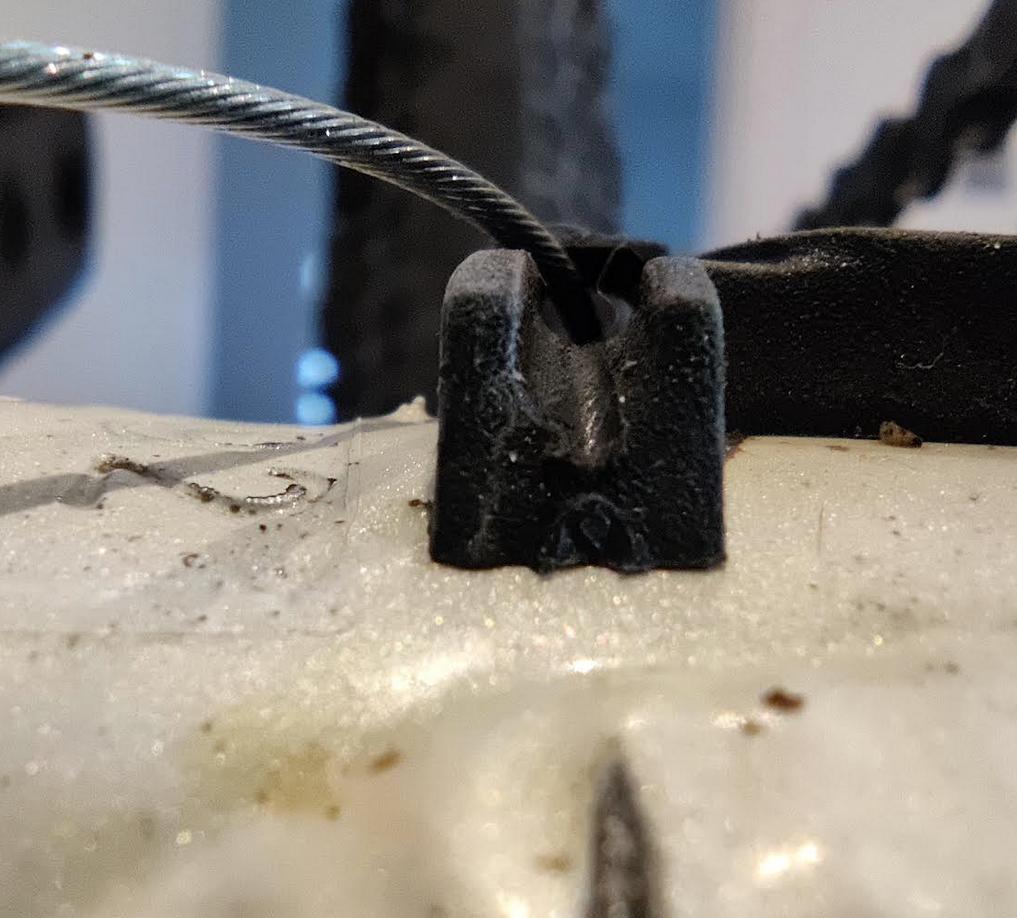I recently replaced the shifter cables on my cyclocross bike (Specialized Tricross). Both cables run exposed (not in cable housing) under the bottom bracket, through a little screwed-on plastic guide that keeps them in place.
When I removed the old cables, one of them also included a short, maybe 8-10" piece of what I would call protective plastic sheeth that kind of sat within the screwed-on plastic guide, extending for a few inches out either side. It was pretty shredded up and I decided to chuck it.
Now that I'm looking at the new cables (approx 200km riding), I'm wondering if I should have looked for a replacement for that protective sheath.
Is that protective sheath important and should I have replaced it? If so, what is it called?
The image below shows the cables right now, looking straight up at the BB, front of bike towards top of image.
I saw this similar question, but it seems like the OP there did not at any point have the protective sheath I originally had on my bike.





